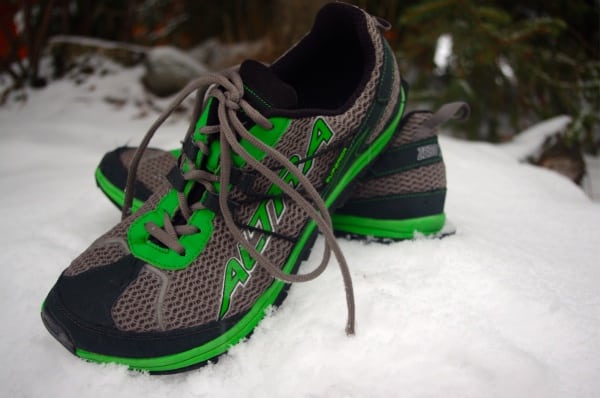Our Favorite Trail Running Shoes
Check out our Best Trail Running Shoes article to learn about our current favorite trail running shoes!
Altra Superior Review
All of us have our standard post-long-run practices. Beer. Calorie-rich food. Maybe a shower. And, of course, that wonderful moment where you take your feet out of the shoes, peel off the sweaty running socks, and spread your toes across the floor… stretching those tired and bruised little buddies. The feeling is so good that a large number of runners have started clamoring for more space in the toe box, so that their toes can enjoy a little more freedom during the run.
Altra has been leading the market with shoes that not only provide more-than-ample toe room in the toe box, but also a diverse offering of “zero drop” shoes. Their latest offering, the Superior, offers a truly lightweight (7.9 ounce), zero-drop shoe for those of us who live on the trails. The Superior is the second trail shoe from the growing company and takes a full two ounces off their previous trail shoe, the Lone Peak.
Upper
There are two notable points on the Superior upper. First, there are the string/cords running from the reinforcements to the lacing-points. It isn’t the first time that a company has employed some kind of connection between the two pieces to help create a secure fit. What is unique to the Superior, is the weight of the cords (relatively light) and their connection with the sides of the upper (they aren’t connected). The design is a bit more exposed than I tend to like on a shoe. Since it’s winter, I didn’t have the opportunity to snag a stick through the cord. Through snow, ice, and snowshoes, the cords proved to be durable and did a fine job of cinching down around the midfoot.
The second is the large toe box. Comparing insoles between the Superiors and a few other brands (Brooks, New Balance, Scott, and Vasque), the toe-box on the Superior is dramatically different. Beginning near the ball of the foot, it is broader than comparable shoes by up to 3/4″. The additional width is towards the medial side of the foot, providing more room for the big toe. Of course, the additional room was noticeable, but it was also effective. During the first week of running in them, I took the Superiors on my long and short runs, trails and mixed course. My toes have never felt better after a run.
The remainder of the upper is pretty standard fair. The mesh is very open. Reinforcements are durable. And, the toe bumper is on the small side of things.
Midsole
The Superiors have a multi-layered approach to the midsole. They include an insole, a removable rock plate, and then an EVA and “Abound”-based sole. With all three pieces, they have an approximately 14 millimeters stack height. With the rock plate removed, the stack height is a slim 12 mm. And, you can remove everything and go down closer to 10 mm. Personally, I enjoyed leaving the rock plate at home. I found the insole and EVA layer (and the solid outsole) provided enough protection and ground feel for me. Regardless of where you land on it, being able to dial in your ride is a great feature. The three-piece system offers a lot of options without being over-designed.
The EVA/Abound midsole is not the softest material out there. If you are looking for spongy cushioning, you won’t find it here. However, Altra prides itself in producing shoes that have longevity and a durable midsole is certainly a large part of that goal. The midsoles on my Superiors show almost no compression after three weeks of regular training. And, although they don’t compress much, the materials have above-average flexiblity (especially with the rock plate removed).
Outsole
Altra picked some durable rubber for the Superior’s soles. While you don’t usually see a lot of wear on soles during the winter, the Superiors have some of the densest rubber of all the shoes in my closet. The tread is composed of ramps laid in alternating directions. This design provided average traction on ice, snow, and frozen dirt. While the design does pick up a lot of small rocks in the tread, it does shed snow very well and, I suspect, would ditch mud just as easily.
The Superior still has the mysterious “Trail Rudder” design on the heel. I agree whole-heartily with Tom Caulghlan’s comments from his review of the Lone Peak: I didn’t notice a difference. I am very curious to hear your opinions of if you have found this design to be useful. I suspect my rudders will meet the utility knife here soon.
Overall
The Altra Superior is a relatively simple and effective zero-drop trail shoe. While still being a durably-built model (aside from the questionable cords on the upper), it provides a lighter and less-cushioned alternative to its older brother, the Lone Peak. Those of you who are looking for ample toe room and a bit more protection than barefoot shoes should give the Superior serious consideration. They will stay in my shoe rotation for those days when I can avoid/afford wet toes, want to get personal with the trail, and am running under 15 miles.
Call for Comments (from Meghan)
- Have you run in the Altra Superiors? If so, what do you think?
- If you’ve tried both the Lone Peak and the Superior, what say you about their similarities and differences?
- The concept of cushioning and zero drop is still unique in trail running shoes. Have you or would you try this kind of ride?




